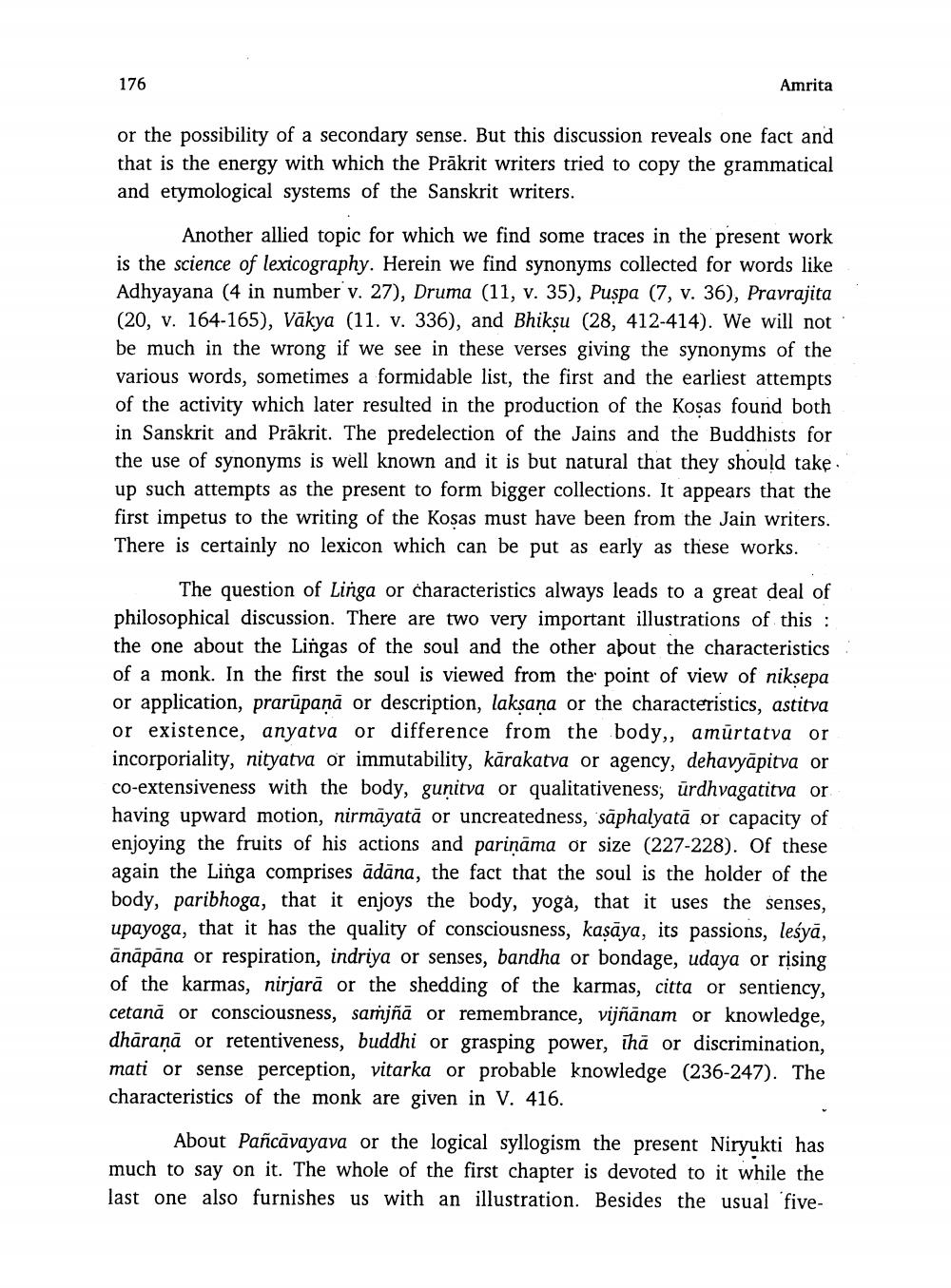________________
176
Amrita
or the possibility of a secondary sense. But this discussion reveals one fact and that is the energy with which the Prakrit writers tried to copy the grammatical and etymological systems of the Sanskrit writers.
Another allied topic for which we find some traces in the present work is the science of lexicography. Herein we find synonyms collected for words like Adhyayana (4 in number v. 27), Druma (11, v. 35), Puspa (7, v. 36), Pravrajita (20, v. 164-165), Vakya (11. v. 336), and Bhiksu (28, 412-414). We will not be much in the wrong if we see in these verses giving the synonyms of the various words, sometimes a formidable list, the first and the earliest attempts of the activity which later resulted in the production of the Kosas found both in Sanskrit and Präkrit. The predelection of the Jains and the Buddhists for the use of synonyms is well known and it is but natural that they should take. up such attempts as the present to form bigger collections. It appears that the first impetus to the writing of the Kosas must have been from the Jain writers. There is certainly no lexicon which can be put as early as these works.
The question of Linga or characteristics always leads to a great deal of philosophical discussion. There are two very important illustrations of this the one about the Lingas of the soul and the other about the characteristics of a monk. In the first the soul is viewed from the point of view of niksepa or application, prarupaṇā or description, lakṣaṇa or the characteristics, astitva or existence, anyatva or difference from the body,, amurtatva or incorporiality, nityatva or immutability, kārakatva or agency, dehavyäpitva or co-extensiveness with the body, gunitva or qualitativeness, urdhvagatitva or having upward motion, nirmäyata or uncreatedness, säphalyata or capacity of enjoying the fruits of his actions and parināma or size (227-228). Of these again the Linga comprises ädäna, the fact that the soul is the holder of the body, paribhoga, that it enjoys the body, yoga, that it uses the senses, upayoga, that it has the quality of consciousness, kaşaya, its passions, leśyä, ānāpāna or respiration, indriya or senses, bandha or bondage, udaya or rising of the karmas, nirjarā or the shedding of the karmas, citta or sentiency, cetana or consciousness, samjñä or remembrance, vijñānam or knowledge, dhāraṇā or retentiveness, buddhi or grasping power, tha or discrimination, mati or sense perception, vitarka or probable knowledge (236-247). The characteristics of the monk are given in V. 416.
About Pañcavayava or the logical syllogism the present Niryukti has much to say on it. The whole of the first chapter is devoted to it while the last one also furnishes us with an illustration. Besides the usual five




